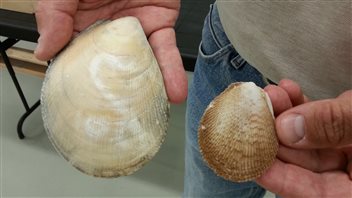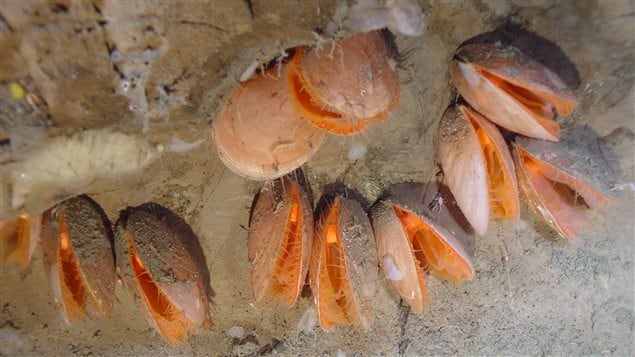Canadian scientists have documented a distinct new species of giant file clam that was originally found in a deep canyon off Newfoundland in eastern Canada. Although specimens were found in Atlantic waters, genetic testing suggests it is not at all related to European clams but may have originated in the Pacific millions of year ago when ocean washed over what is now the Panama Canal.
“It’s usually around 12 to 15 cm long,” says Jean-Marc Gagnon, curator of invertebrates with the Canadian Museum of Nature, and the scientist who first found the new species. “It’s a beautiful…whitish shell. It can be orangish sometimes…but when it’s live you can see the beautiful orange tissue in between the valves that protrude with long tentacles.”
Listen
‘Very special, very rich communities’
The original specimen was collected from about 5,000 metres under the sea, in what Gagnon describes as a beautiful setting. “We’re talking about deep ocean canyons. There are often rocky cliffs underwater…It’s very special, very rich communities that live in there.”
Genes can tell a story
More clam samples were collected off the Grand Banks and in a marine protected area about 220 km off the coast of the province of Nova Scotia. They were compared to samples from Europe and the Gulf of Mexico. Although the shells looked similar, the genes were different and Gagnon says further genetic study could reveals facts about the geographic history of the world.
See underwater video of the giant file clam and more photos.







For reasons beyond our control, and for an undetermined period of time, our comment section is now closed. However, our social networks remain open to your contributions.